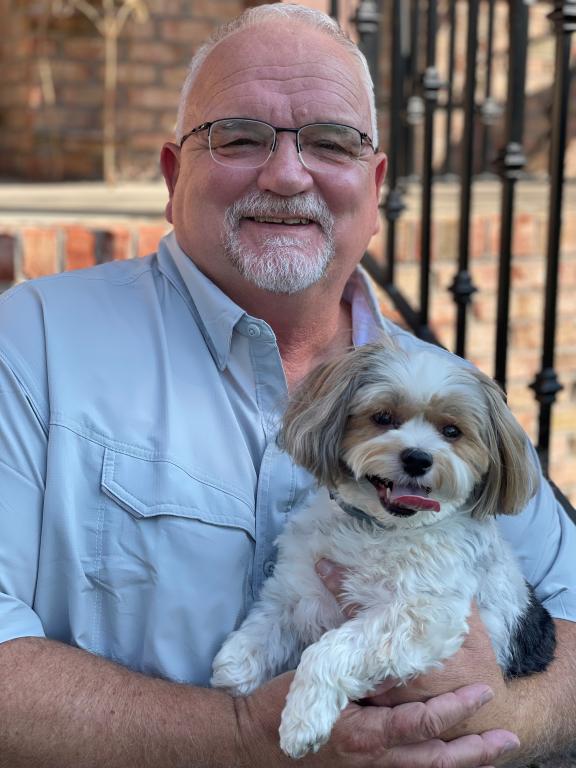
After 35 years at Y-12 National Security Complex, Scott Abston was ready to retire.
Or so he thought.
When Abston heard about a position in the Isotope Science and Engineering Directorate's Isotope Processing and Manufacturing Division, or IPMD, Abston reconsidered his retirement plans. He applied for the job, wanting an opportunity to both support isotope production and work with his former manager at Y-12, Jim Placke, who had joined the Department of Energy's Oak Ridge National Laboratory as IPMD director in 2022.
"The mission appealed to me; it was something I really wanted to do," Abston said. "The most appealing aspect is what the process can mean to people's lives. If you look at actinium-225, for example, that is a very, very important isotope that is sent out to hospitals and patients each week because of its use in cancer treatments. It's critical that they receive this material. And californium-252 and plutonium-238 are such diverse isotopes, used in so many different applications. Of course, space exploration, which uses Pu-238 to fuel deep space missions, is the coolest thing, and anytime you can be part of that process and that environment, it's so appealing."
So, in the summer of 2023, after retiring from Y-12, Abston signed on to lead IPMD's Operation Support group, which supports process equipment reliability and availability in support of mission critical needs.
Abston and his team are responsible for maintaining process equipment that supports the processing of isotopes. This includes monitoring the availability of workspaces - such as hot cells - and equipment, both by preventive maintenance and ensuring an inventory of "critical spares" so when components fail, they can be quickly replaced to minimize work disruption. It also includes implementing Conduct of Operations actions and controls to serve the rapidly growing division well over the long term.
While Abston is responsible for a smaller physical space than at Y-12, where he last served as Enriched Uranium Operations System health manager, it's more complex.
For instance, his team is currently planning for a needed repair to the Tank-65 evaporator, which requires collaboration with maintenance and engineering. In a normal situation, the person repairing such equipment would be no more than a foot from the work. But in this case, the tank resides in an area with radiation dose high enough that it's not safe for a human to enter. The repair will be done with reach rods, with staff watching a monitor that shows a feed from a GoPro camera that will be lowered into the pit.
"They'll be controlling the tool from 25 feet away from the actual work," Abston said of the repair, which is scheduled for October.
Abston grew up in the small Morgan County town of Oakdale, about 45 minutes west of the lab, but as a student, he wasn't really attuned to the lab's history or its modern-day work.
"A lot of the folks I knew growing up worked in this area," Abston said. "If I knew then what I know now, I'd have asked them a lot of questions."
After graduating, he worked in construction for a period before hiring on at the K-25 gaseous diffusion plant in 1988. The DOE contractor had ceased processing operations and placed the plant, which had been operating since the 1940s, in shut-down mode. Abston's job was to coordinate efforts to remove the decommissioning process equipment and ship it to gaseous diffusion plants in Portsmouth, Ohio, and Paducah, Kentucky. Both of those plants are now closed as well, with gaseous diffusion largely replaced by more efficient enrichment methods.
In 1997, Abston went from K-25 to Y-12, where he gained knowledge and experience with enriched uranium production, supporting wet chemistry and oxide production, among other skills.
He now wants to ensure that when he does decide to retire, he's transferred his own knowledge to others, part of the groundwork for the division's future.
"I'm at a point now in my life where I have a lot of experience; I've seen a lot of things," Abston said. "There are individuals in my group who I want to mentor for the next several years. I just want to make sure I'm conveying and relaying the information I do have, that I'm not holding anything close to me. I want to mentor the younger folks in my group so that if later they want to go into a group leader position or into research, we have taken the initial steps to get them there."
Abston enjoys the simple things, such as spending time with his dog, Cheech. He gets satisfaction out of performing upkeep and maintenance on his home - similar to what he does at work.
"I'd planned to retire by 60, but I'm really glad it didn't work out that way," said Abston, who turns 60 in November. "I wasn't really ready to quit working."
Now, having worked 14 months in IPMD, "I'm so happy I came over here," he said. "I really, really like it."
UT-Battelle manages ORNL for DOE's Office of Science, the single largest supporter of basic research in the physical sciences in the United States. The Office of Science is working to address some of the most pressing challenges of our time. For more information, please visit energy.gov/science.






